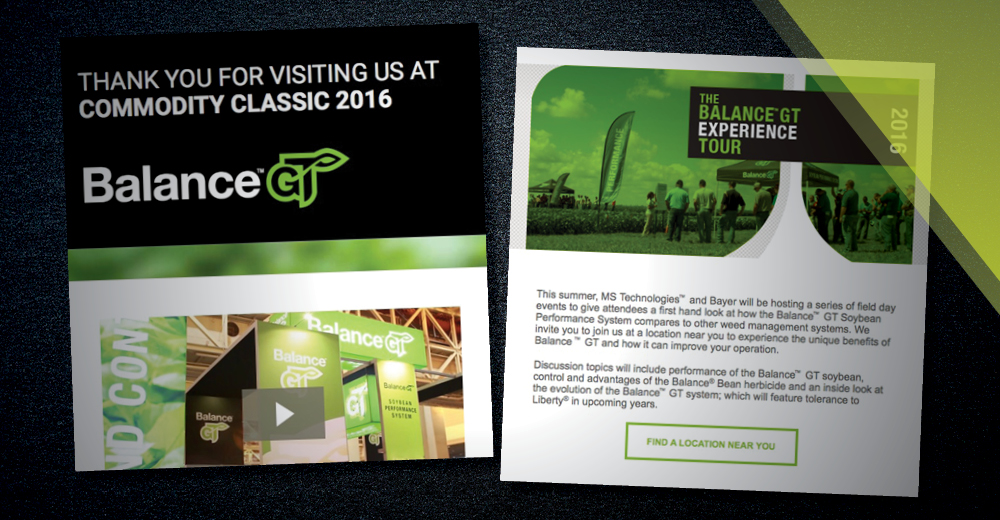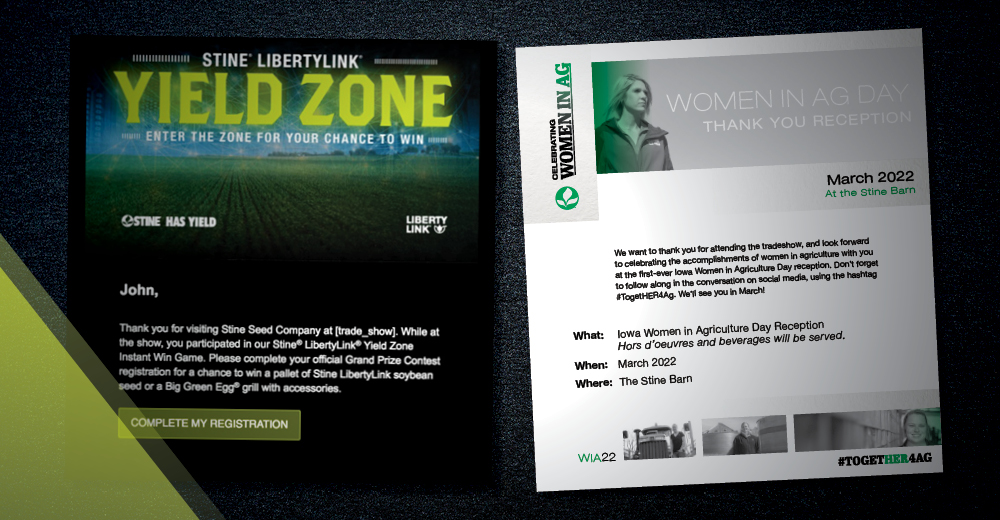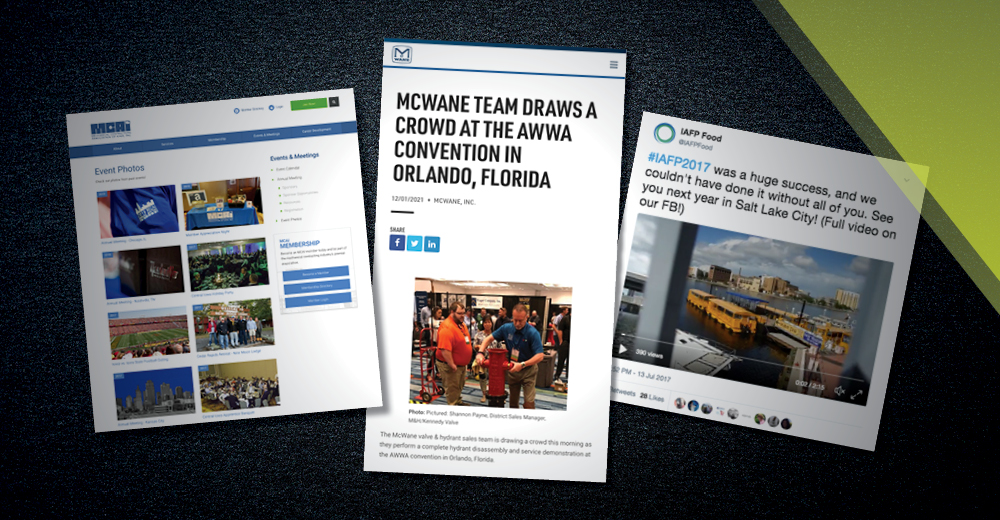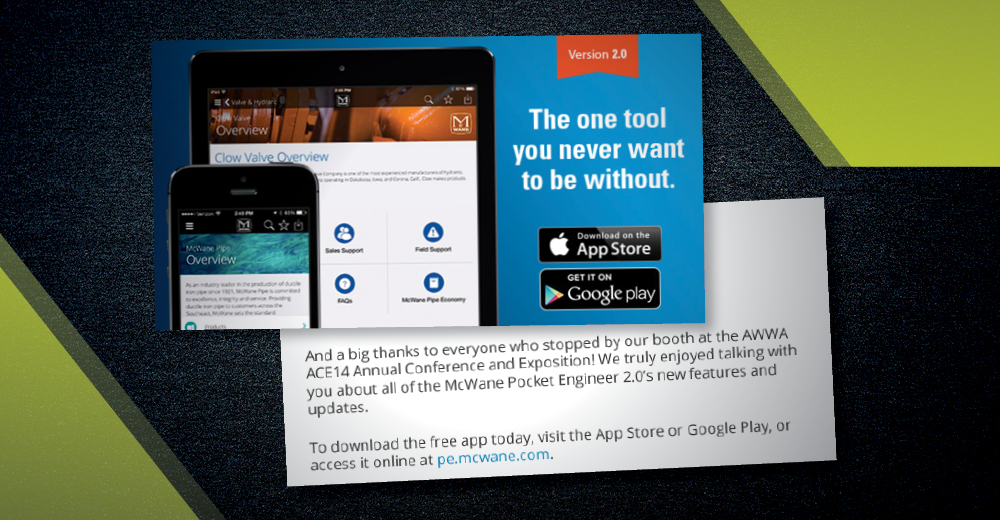Brand exhibitors often leave trade shows teeming with new ideas and potential leads. Many believe 2022 will bring the return of trade shows — events brands rely on to garner new business and learn from peers. It’s important for brands to be represented at these events, whether they’re in-person, virtual or hybrid.

In our trade show blog series, we provide a game plan for brands to prepare for and make the most of the event. It’s just as important after the trade show ends to follow through on leads and information gathered.
Don’t let leads linger.
Your organization spent months planning the perfect trade show booth or online event to capture attention, share information about products and services and garner leads. Now it’s time to cash in on your hard work by following up with potential customers. An astounding 80% of exhibitors let leads languish.
Know the minute the trade show is over, there is something that can be executed, like gathering contact information and sending an email. This helps keep the brand in front of people. Timely follow-ups are crucial.
Brett Adams, Trilix president and chief marketing officer
To avoid missing those sales opportunities, have a few employees assigned to input contact information into an organized, searchable database, marking the degree to which individuals showed interest in purchasing the product or service.
“Know the minute the trade show is over, there is something that can be executed, like gathering contact information and sending an email,” recommended Brett Adams, Trilix president and chief marketing officer. “This helps keep the brand in front of people. Timely follow-ups are crucial.”
However, only one or two communication attempts immediately following the event are necessary. Multiple organizations from the trade show are likely filling attendees’ inboxes at the same time.
That initial communication could be a thank-you email, more information about products or a discount opportunity specifically for trade show attendees. If you had a contest or large giveaway during the show, it’s a good idea to share results with participants to show your brand followed through.

Retarget potential customers.
Media Director Travis Ziemke explained that digital ad metrics allow marketers to see who clicked on ads run during the show. Geofencing even allows marketers to see who visited a brand’s booth. If your event had digital components, you can determine who navigated to your organization’s website before or during the event through pixels on your brand’s website — snippets of code that identify web users’ devices. Marketers can use that information to retarget to potential customers.
Relating the show to your message is recommended because this educated industry audience knows you’re looking to connect with them after the event.
Travis Ziemke, media director at Trilix
“Based on the information you have about each individual, messaging could say, ‘We see you stopped at our booth or visited our site,’” Travis said. “Relating the show to your message is recommended because this educated industry audience knows you’re looking to connect with them after the event.”
Those who interacted with that retargeting ad show promise as additions to your regular communications funnel.

Use the material you gathered.
The flurry of in-person trade shows and online events can create a wealth of content to use for marketing materials throughout the year. Any photos, video, audio or other media you captured during the event itself could be used for social media, brochures, blogs, website pages, podcasts, advertisements and other marketing content. On the other hand, chatting with current and potential customers during the event can give brands valuable insight as to the issues, concerns and needs facing your industry.
“Once you’ve had the opportunity to talk to a customer and gather good information, you’re prequalifying them as someone who can at least provide insight to industry issues. Perhaps your brand can provide the answer through experts on your staff,” Brett noted. “Now you have the chance to position the brand or employees as experts on timely topics.”

Start planning for next year.
“It’s never too early to start planning for next year’s trade show,” said Brent Wirth, vice president of creative at Trilix. “Depending on how large your presence is, you might start heavily planning more than six months out from the event.”
Booth structure; product demos; and branded merchandise, display materials, and promotional items all take a few months to create. Event hosts also require some booth items to be delivered so far in advance.
Additionally, early planning allows your organization to determine how to incorporate digital components to your trade show event. While top trade show officials expect in-person events to return with a vengeance in 2022, hybrid events provide benefits: Virtual components make it easier for some to attend a portion of the event — and make it easier for brands to pivot to a heavily digital event if necessary.